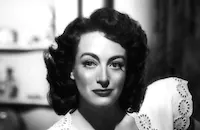Our Dancing Daughters

Brief Synopsis
Cast & Crew
Harry Beaumont
Joan Crawford
John Mack Brown
Nils Asther
Dorothy Sebastian
Anita Page
Film Details
Technical Specs

Synopsis
Diana Medford, a vivacious, wide-eyed young girl devoted to Terpsichore and hip flasks, falls in love with Ben Blaine, the son of a millionaire. She is soon badly disappointed, however, for Ben marries Ann, a hard-drinking blonde pushed into marriage by an avaricious mother. Ann falls downstairs and kills herself, however, and Ben, free of his tempestuous bride, turns to Diana for love and consolation.

Director

Harry Beaumont
Cast

Joan Crawford

John Mack Brown

Nils Asther

Dorothy Sebastian

Anita Page
Kathlyn Williams

Edward Nugent

Dorothy Cumming

Huntly Gordon
Evelyn Hall
Sam De Grasse
Crew
Marian Ainslee
William Axt
George Barnes
Harold S. Bucquet
David Cox
Ruth Cummings
Cedric Gibbons
William Hamilton
Josephine Lovett
Josephine Lovett
Ballard Macdonald
David Mendoza

Photo Collections
Videos
Movie Clip



Film Details
Technical Specs

Award Nominations
Best Cinematography
Best Writing, Screenplay
Articles
Our Dancing Daughters
So wrote F. Scott Fitzgerald, the most celebrated novelist of the Jazz Age, about the star of Our Dancing Daughters (1928). This was the vehicle that turned 24-year-old Crawford into a star after three years as an ingenue and featured player at MGM. Always brazenly ambitious, Crawford had stolen a copy of the screenplay from the studio script department and presented it to producer Hunt Stromberg, begging him for the role.
Crawford later said that, after Stromberg relented and gave her the part, the script was revised to suit her persona, marking the first time a studio screenwriter wrote especially for her. (Josephine Lovett would be Oscar-nominated for the screenplay, adapted from her magazine serial.) Crawford also acknowledged that, at the time, she was much like her character, Diana: "It was a way of life I knew. I was the flapper, wild on the surface, a girl who shakes her windblown bob (mine started a craze) and dances herself into a frenzy while the saxes shriek and the trombones wail, a girl drunk on her own youth and vitality."
The film portrays Diana as an innately refined young socialite whose identity as a wild young thing is really a ruse and a wake-up call to her high-living parents. Once into the swing of things, however, she goes all out as a gin-guzzling party girl given to uninhibited dancing and feverish flirtations with the opposite sex. In one scene Crawford even sheds her dress and dances in her white satin underpants.
The plot also has Crawford falling for millionaire Johnny Mack Brown and suffering a broken heart when he marries a promiscuous gold digger instead (she's played by Anita Page). The third major female character in the story, a socialite haunted by past indiscretions, is played by Dorothy Sebastian.
Shot partly on location in Carmel, Calif., with typically lush MGM production values, beautiful Art Deco sets by Cedric Gibbons and Oscar-nominated cinematography by George Barnes, Our Dancing Daughters was released with synchronized music and sound effects. It was an instant hit, grossing a then-spectacular $40,000 in its first weekend. The movie was followed by two similar films, Our Modern Maidens (1929) and Our Blushing Brides (1930), that reunited Crawford, Page and Sebastian. By that time, however, Crawford had far outpaced her costars to become one of MGM's reigning superstars.
Producer: Hunt Stromberg
Director: Harry Beaumont
Screenplay: Josephine Lovett (from her story), Marian Ainslee (titles), Ruth Cummings (titles)
Cinematography: George Barnes
Art Direction: Cedric Gibbons
Editing: Margaret Booth, William Hamilton
Costumes: David Cox
Cast: Joan Crawford (Diana Medford), Johnny Mack Brown (Ben Blaine), Nils Asther (Norman), Dorothy Sebastian (Beatrice), Anita Page (Anne), Kathlyn Williams (Anne's mother), Edward Nugent (Freddie).
BW-84m.
By Roger Fristoe

Our Dancing Daughters
Quotes
Trivia
The film that made Joan Crawford a star.
It was on the set of this film that Joan Crawford first met her biological father. She never saw him again.
Miscellaneous Notes
Nominated for two Academy Awards for Best Screenplay (Josephine Lovett) and Best Cinematography (George Barnes).
Released in United States 1928
Released in United States on Video June 19, 1991
Two sequels were made, both starring Joan Crawford: "Our Modern Maidens" (1929) directed by Jack Conway and "Our Blushing Brides" (1930) directed by Harry Beaumont.
Released in United States 1928
Released in United States on Video June 19, 1991













